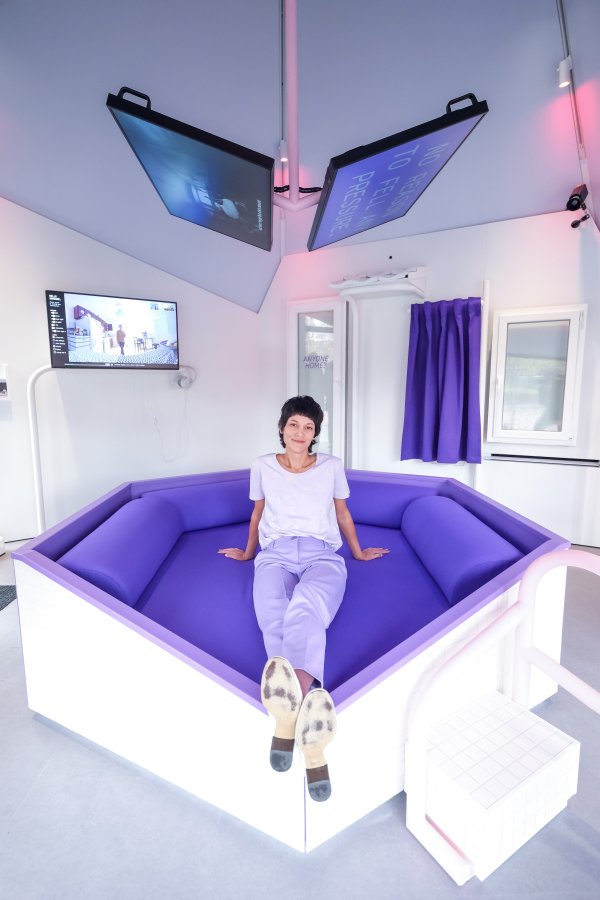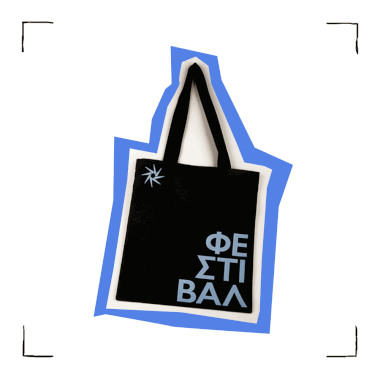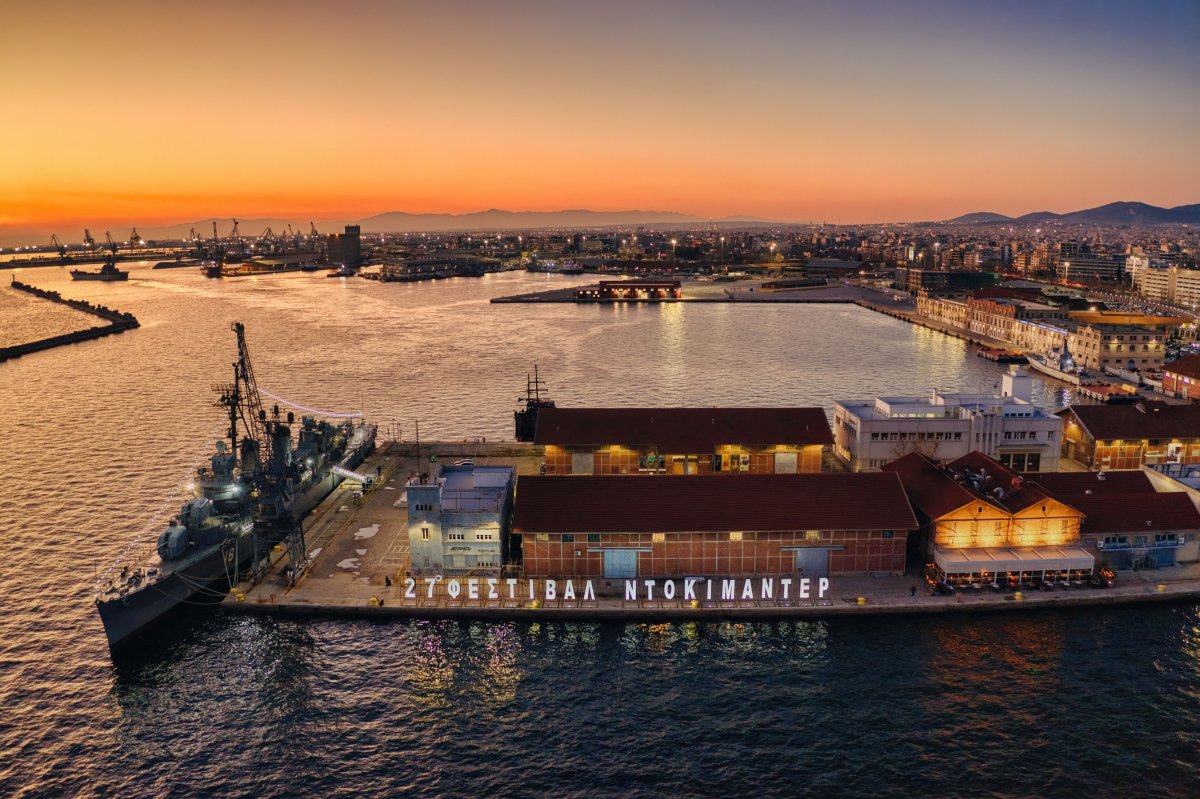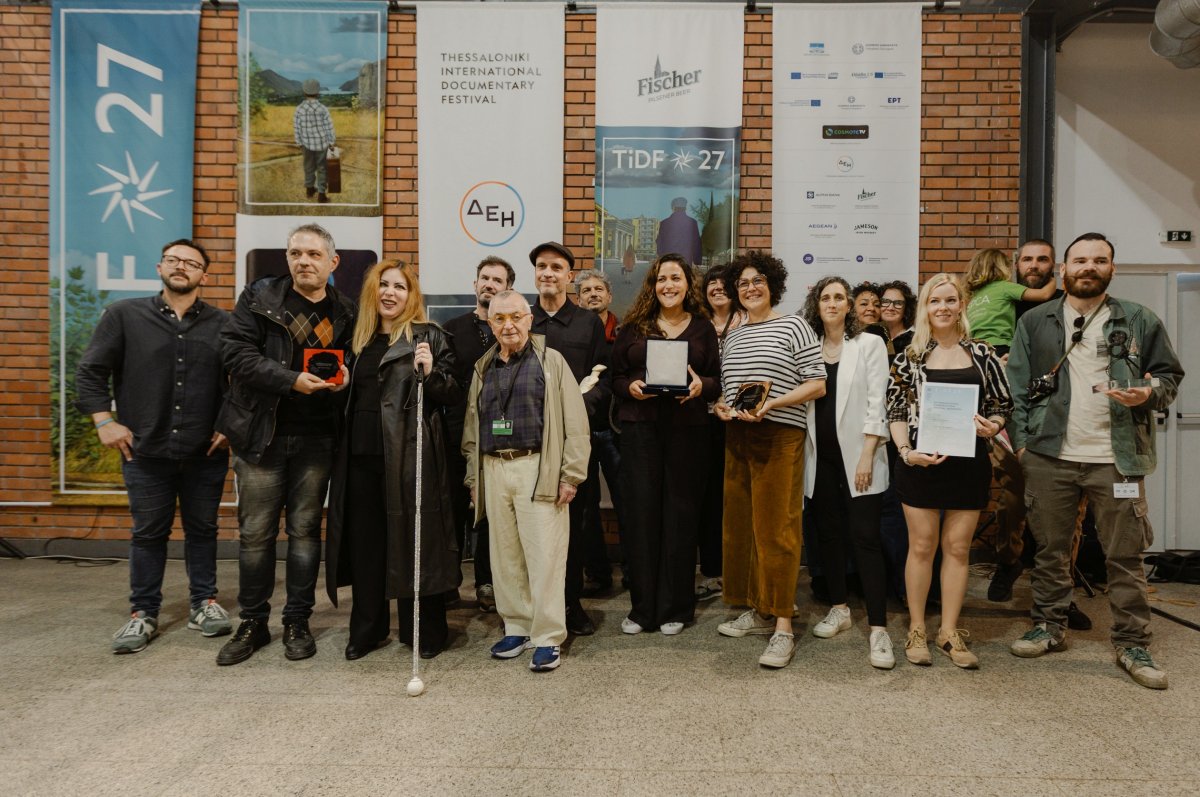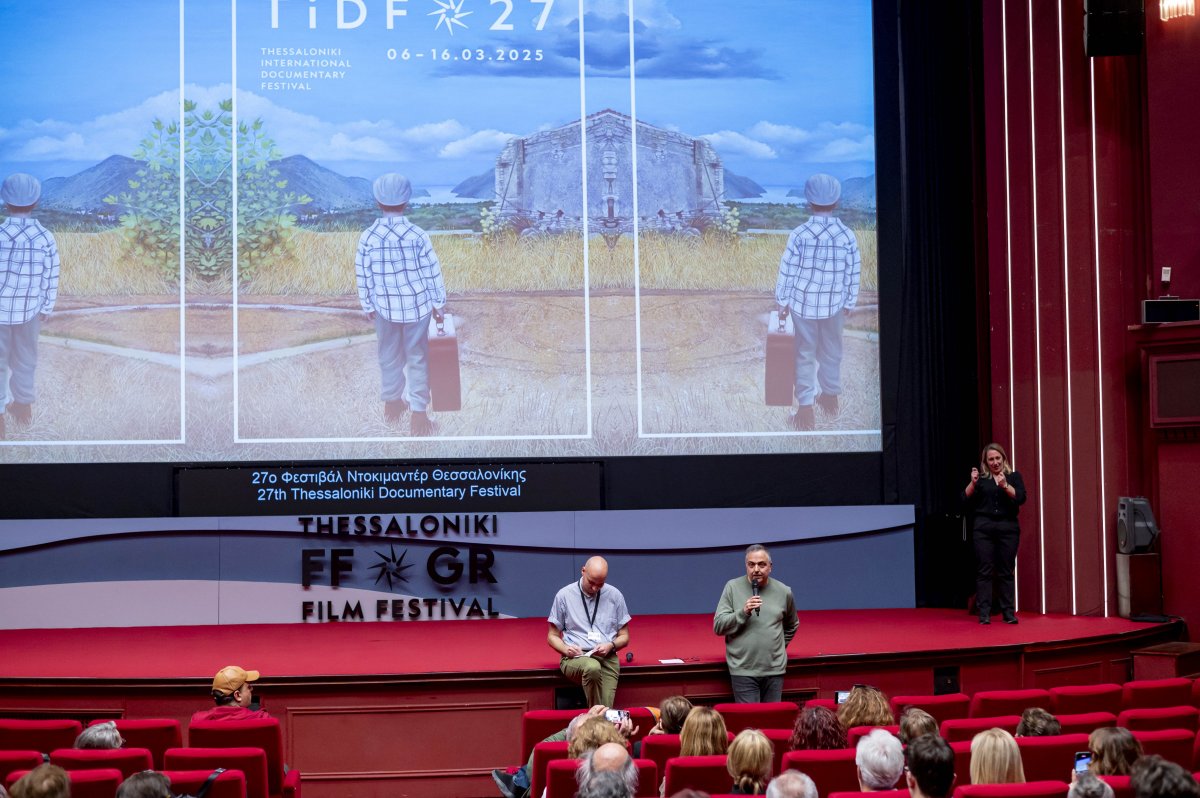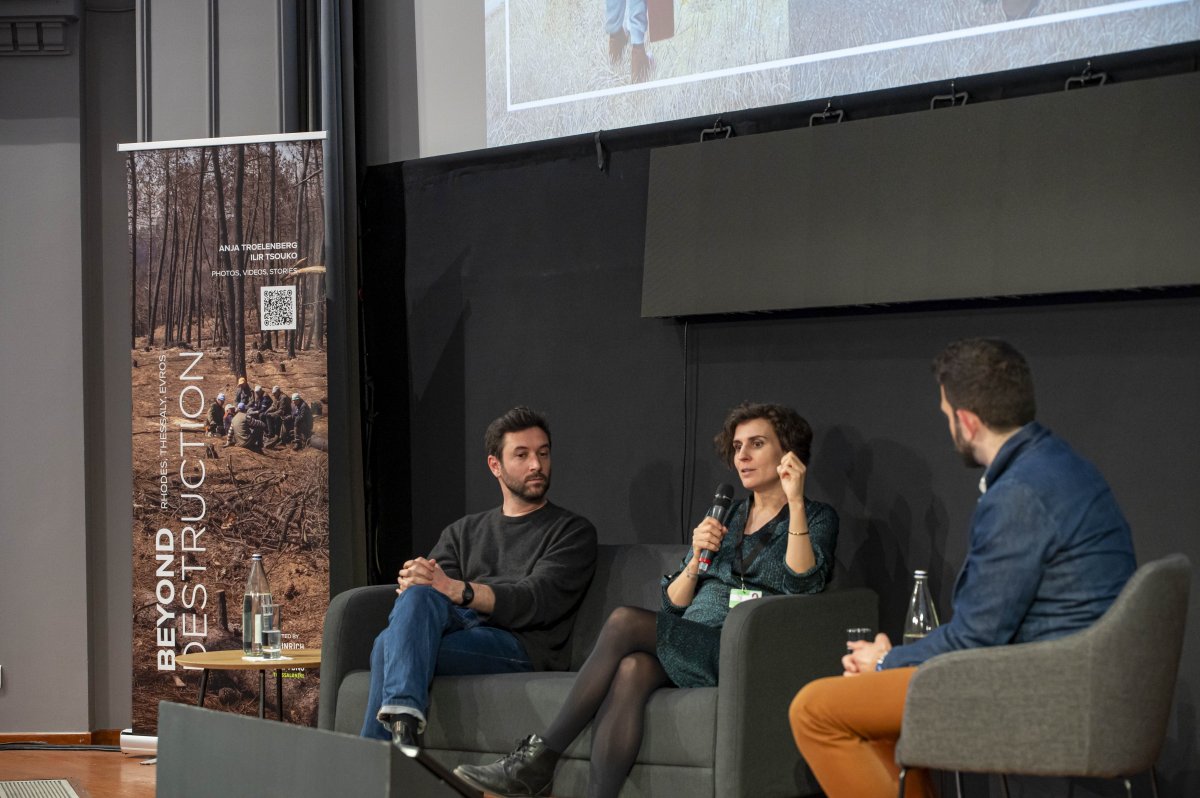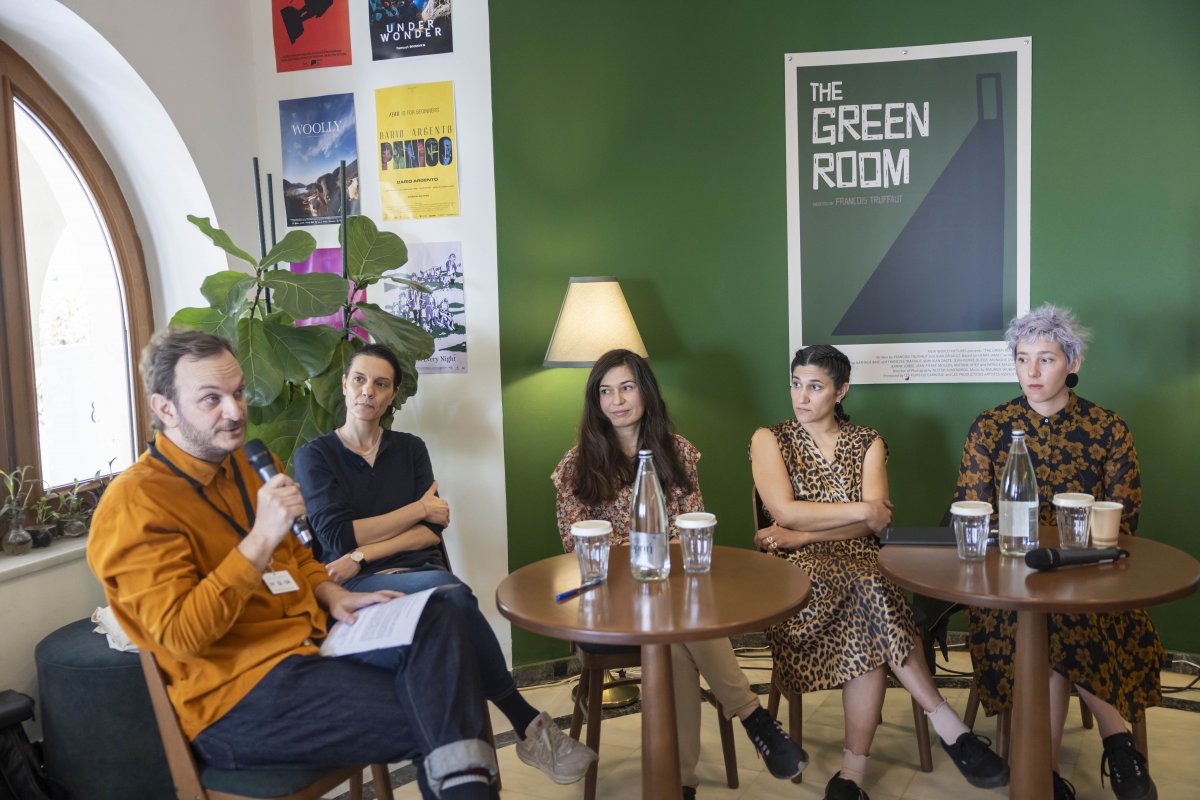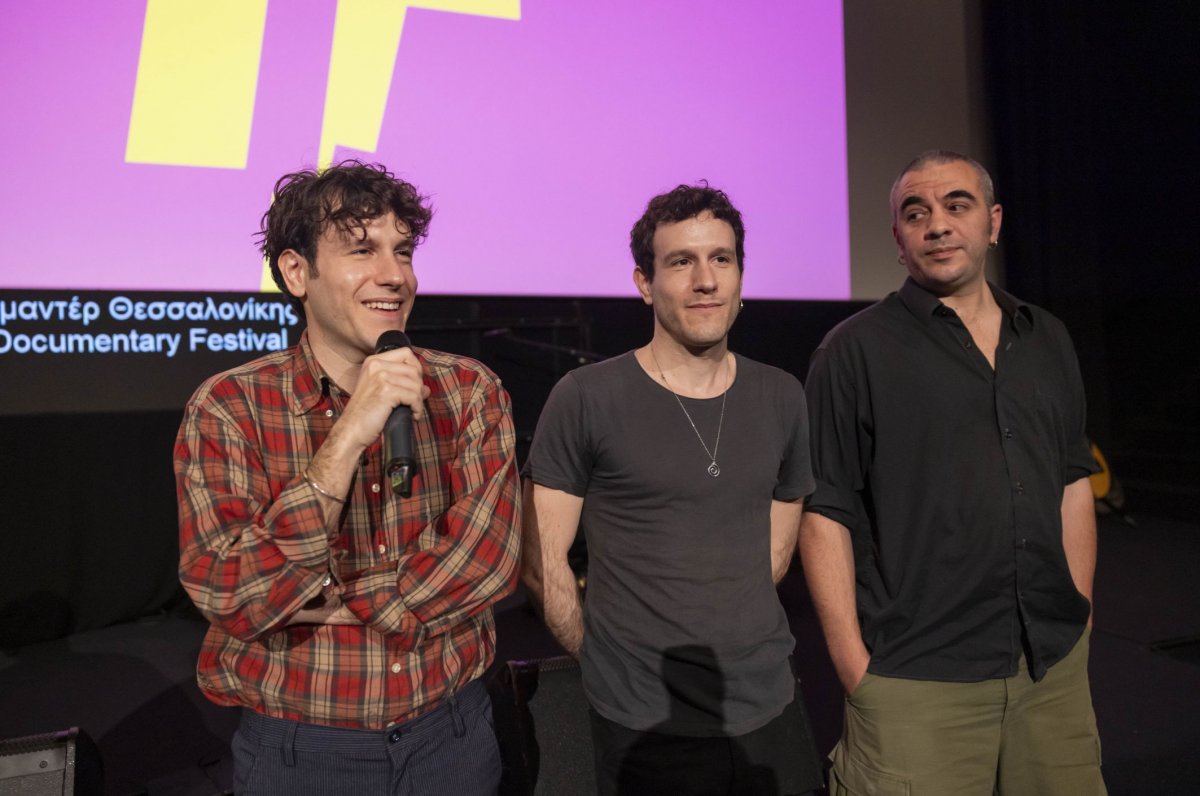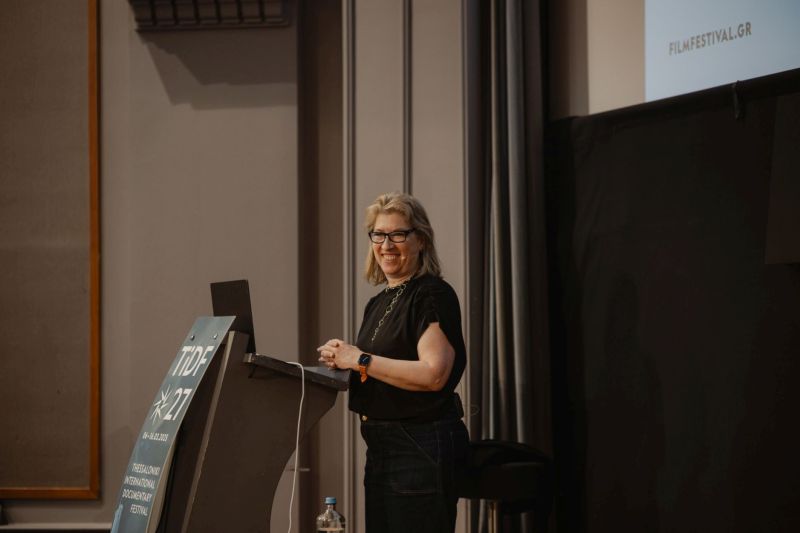Αrtificial Intelligence is no longer a sci-fi scenario – it’s here and it’s changing the world around us. How does it affect our everyday lives? What status does it hold in art and cinema in particular? Where does human creativity come to a halt and where does the algorithm take over? The AI, an Inevitable Intelligence tribute of the 27th Thessaloniki International Documentary Festival (6-16 March, 2025) invites the audience to embark on a fascinating journey that includes a selection of eye-opening documentaries, an impressive visual installation, a masterclass, a special two-language edition, as well as the Festival’s magazine First Shot, co-created this year with the help of AI as a form of experimentation. A cinematic exploration of the new reality, standing in the threshold between the man-made and the digital.
The films: Films that delve into the different aspects of Artificial Intelligence will be screened as part of the tribute. Among them we encounter The Hexagonal Hive and a Mouse in a Maze directed by Tilda Swinton, an intriguing journey inside the mechanisms of learning and how it has come to be influenced by technology. The Biography of a Software by George Drivas, an audiovisual conversation with a smart software, is the first medium-length Greek film entirely made by AI. The Festival’s lineup is also featuring, among others, About a Hero, a film adaptation of a script written by an AI engine that has studied the work of Werner Herzog.
Visual installation: Within the framework of the 27th Thessaloniki International Documentary Festival, the Festival’s grand sponsor COSMOTE, member of the TELEKOM Group, is proposing a unique experience that intertwines art and AI technology. LAUREN: Anyone Home? by artist and UCLA professor Lauren Lee McCarthy will be showcased at MOMus-Experimental Center for the Arts (Pier A, Port of Thessaloniki).
Masterclass: Within the tribute’s context, on Sunday March 9th at 12pm, at Pavlos Zannas theater, the masterclass AI and ART EXPERIENCE powered by Telekom will be held, giving the audience the chance to take a glance on the thrilling relation between AI and art. Actress Stefania Goulioti, visual artist and director George Drivas, the founder and president of the Institute of Philosophy and Technology Giannis Stamatelos, songwriter Kostis Maraveyas, artist and UCLA professor Lauren Lee McCarthy will discuss on the possibilities and challenges involved in the use of Artificial Intelligence in art, opening a window on the future of creation. Their goal is to explore the boundaries of artistic creation.
The Festival’s editions: The Festival’s special edition dedicated to AI will include texts written by academics, artists, journalists and tech specialists, analyzing a series of issues that have emanated from the evolution and widespread use of AI over the last years. Moreover, Festival’s magazine First Shot, having Artificial Intelligence at its core, will be the outcome of an extended dialogue with AI.
Visual Installation
In LAUREN: Anyone Home? the artist, as if a human version of Alexa, watches over and controls the house of the visual installation’s visitors. The experience kicks off with the installation of smart devices, such as cameras, microphones, locks, faucets, and other possible home appliances, which transform the space into a fully connected smart home.
Unlike ordinary smart home technologies, LAUREN: Anyone Home? focuses on human presence, enhancing the simple algorithms with perception and intuition. It functions as a human-centered digital assistant, balancing between intimacy and privacy, convenience and agency, while also foregrounding the role of human labor amidst an increasingly automatized world. Through this experience LAUREN: Anyone Home? invites the audience to contemplate on their relationship with technology and the control it exercises upon their personal space, offering a different glance at what “smart” technology could truly be. The work demonstrates the ways through which Artificial Intelligence could trigger a meaningful dialogue.
The work was bestowed with the Human AI Art Award, a joint initiative by TELEKOM and the Bonn Kunstmuseum. The award highlights how Artificial Intelligence could reshape our understanding of creativity and technology, by supporting works that intertwine art with AI aiming to influence or change the way technology is being used and perceived today. Mc Carthy’s work epitomizes the award’s mission, as it adopts a critical approach over Artificial Intelligence, while reimagining how humanity, nature and technology could co-exist.
LAUREN: Anyone Home?
Medium: Performance Installation
Artist: Lauren Lee McCarthy, 2024
Curator: Christiana Kazakou
Installation design in collaboration with Ben Evans James
Studio assistant: Wylie Kasai
Opening: Saturday March 8th
Duration: 8-16 March
The tribute’s films:
In About a Hero (2024) by Piotr Winiewicz, after a local factory worker dies under mysterious circumstances, Werner Herzog travels to Getunkirchenburg to investigate his perplexing death. However, Herzog is not who he seems, nor is the film what we expect… About a Hero is an adaptation of a script written by an AI trained on Herzog’s body of work. The fictional narrative it produced, ironically self-reflective, is intertwined with a series of interviews with artists, philosophers and scientists reflecting on the notion of originality, authenticity, immortality, and the soul in the age of AI.
In Flash Wars: Autonomous Weapons, A.I. and the Future of Warfare (2023) by Daniel Andrew Wunderer we see how AI controls kamikaze drones and robot dogs that patrol the streets of New York. Science fiction has become a reality. Specialists discuss the ways AI has radically altered the nature of contemporary military conflicts, while signing the alarm sign over the possible dangers. Exploring the deep philosophical, legal, ethical and material overtones of machines that have the ability to spread death, the documentary showcases opinions from robotics experts, militaries, hackers and mechanics, bringing forth a new perspective in this type of world conflict.
In the Belly of AI (2024) by Henri Poulain investigates how artificial Intelligence fuels our dreams and nightmares. But while tech giants promise the advent of a new humanity, behind the scenes AI remains totally hidden. While data centers concrete over landscapes and dry up rivers, millions of workers around the world prepare the billions of data that will feed Big Tech's voracious algorithms, at the cost of their mental and emotional health. They are hidden in the belly of AI. Could they be the collateral damage of the “Longtermism” ideology that has been brewing in Silicon Valley for some years now?
The Biography of a Software by George Drivas (2024) wonders what takes place when a man who has lost all memory tries to recall his life with the help of a computer. What happens if this man has not forgotten everything? If this man does not even react like a human being. The Biography of a Software is a multimedia project conceived and carried out by visual artist George Drivas, in collaboration with music composer Melina Paxinos, which explores and presents the evolution of AI programs with the use of moving image, photography and music. An audiovisual dialogue with intelligent software, used to digitally retrieve audiovisual data from the past and to reactivate the memory of a person searching for their lost identity.
The Hexagonal Hive and a Mouse in a Maze (2024) by Bartek Dziadosz and Tilda Swindon wonders whether every thought is a movement, and every movement is a thought. What is intelligence and when is it artificial? Can robots dance? Can they help our children learn how to be? How are we learning, and do we ever stop? What are the values and skills that we pass on as societies through games, craft, stories and cinema? The Hexagonal Hive and a Mouse in a Maze invites viewers to consider the mechanics of learning. We search in the cabinets of a supercomputer, in the curve of a chalked letter, in the weaving of a basket. We jump down the rabbit hole and seek counsel from researchers and public intellectuals. The film incites us to wonder afresh what the human spirit might yet dream up as new and improved programming for our species.
iHuman (2019) by Tonje Hessen Schei, wrapped in a political thriller ambiance, raises poignant questions on AI, power games and social control. Penetrating into the unseen corridors of AI technology, the film aptly demonstrates how the most powerful technology of our times changes our lives, our society and future. The documentary tracks down the pioneers of this invisible tech revolution and discerns the ways through which it evolves and imposes itself, while formulating the most uneasy question: Will AI be used as a lever of progress and a means of achieving greater good or will it lead to a dystopian society of unprecedented totalitarian control?
The tribute’s short films:
Within the tribute’s framework the Festival is teaming up with OpenDocs, a pioneering program of worldwide scope, offering support, financing, AI tools and consulting services to artists from all over the world. It is an initiative launched by Anna Giralt Gris and Jorge Caballero that aims at enabling artists from all over the world to incorporate AI tools into storytelling. Five of the films selected within the framework of Open Docs will be showcased at the 27th Thessaloniki International Documentary Festival:
In the haunting 512x512 (2023) by Arthur Chopin, through the use of AI, an Internet user is trying to reconstruct the face of Francine Descartes, the young daughter of the French philosopher René Descartes, based on the myth that the legendary philosopher had once made a robot featuring the face of his daughter following her death.
In KinkTimacy (2025) by Quang Nong we are initiated in the Japanese sadomasochistic practice of Shibari, following an immigrant from Cambodia who lives in Australia. Α zealot of sexual liberation, the main hero introduces us to people who wish to get acquainted with the transformative qualities of fetishism. The documentary interweaves scenes from his everyday life with AI material.
Following an accident in Kosovo, a woman wakes up speaking fluent Vietnamese, whereas an American soldier in Vietnam forgets his English after a head trauma. Through a resourceful narrative thread, filled with imagery produced by Runaway AI, eerie Saigon, Kosovo (2025) by Tin Dirdamal unfolds a love story between two people destined never to meet.
The Rock Speaks (2025) by François Knoetze and Emily Louise Wilson follows a rock of cobalt in a trans-continental journey that starts from Congo and ends in the globalized production chain. A hybrid documentary that uses generative Artificial Intelligence to visualize the territories where this rare earth mineral is extracted.
How does a machine learn how to interpret our world? Their Eyes (2025) by Nicolas Gourault introduces us to the people who process and categorize countless images from the street traffic in the US, with the purpose of training the automobiles of the future. At the same time, these people express their fear of being made redundant by the very same software they have been training.
In addition, a series of experimental AI-themed short films will be screened as part of the tribute. Among them:
Ethereal Rhythms, Everything Rhymes (2025) by Brecht Vanhoutte records a day from the director’s life. The artist draws inspiration from personal notes and diary sketches, and uses the text-to-image conversion technique to breathe life into his little moments and inner thoughts, in the form of a surreal and rhythmical journey.
Gerhard (2025) is a hybrid film that sheds light on one of the most successful living painters, placing emphasis on the social dimension of painting. Gerhard Richter’s unique techniques flood the art market and social media. The myth of the artistic genius is inscribed in a frenzy chain of creativity, weaving a fabulous yet controversial homage.
Duck (2024) by Rachel Maclean is a deepfake movie that uses technology to bring back to life all the titular heroes in the James Bond franchise, following Sean Connery in his attempt to “murder” Merilyn Monroe. Funny and innovative, the film binds together film noir, sci-fi and video games elements, raising questions on notions such as truth and power.
Ambitious documentary Time Metallurgist (2024) by Tomáš Rampula attempts through the use of AI technology to reconstruct images from the life of Eeadweard Muybridge, who succeeded in depicting the illusion of movement, becoming the forefather of cinema.
The experimental animation Echoes of Grief (2023) by Verena Repar invites us on a journey through phantasmagoric realms, oscillating between shadow and light, past and present, sorrow and solace. Guided by a faint shimmer illuminating an ever-changing path out of the dark, lined with memories of the irretrievable.
In I’m Not a Robot (2023) by Victoria Warmerdam, we are intrigued by an existential identity quest. After several unsuccessful attempts to complete a Captcha, feminist Lara sets out to answer the disturbing question of whether she’s a robot, and therefore bought by her own boyfriend.
Special edition and First Shot magazine
Moreover, the Festival has a two-language edition under way, including essays and articles by distinguished journalists, academics, artists and tech experts that contemplate on issues related to Artificial Intelligence, its evolution and relationship with cinema. In particular, journalist writer and documentary filmmaker Yorgos Chatzivasileiou discusses AI’s ethics and philosophy, film director and multimedia-visual artist George Drivas explains and analyzes his film titled The Biography of a Software, scheduled to be screened as part of the AI, an Inevitable Intelligence tribute, whereas Anna Giralt Gris and Jorge Caballero, founders of of the production company Artefacto, specialized in new technologies, will delve into the relation between AI and the documentary genre.
The edition will also feature pieces by Yiorgos Drossos, visual artist and PhD holder at the Audiovisual Arts Department of the Ionian University, and Nektarios Sakkas, member of the Festival’s International Program team. Last but not least, the edition will entail the republishing of an article written by artist and author James Bridle, which focuses on the interconnection between art and technology, as well as an eye-opening AI glossary, aiming to familiarize us with this new world that is opening up before us.
The Festival’s beloved First Shot magazine is centering on the ties that unite Artificial Intelligence with art, cinema and the Festival itself, in a highly innovative edition co-created alongside AI. We asked Artificial Intelligence to provide us with answers on a series of questions that range from its very existence all the way to humanity and art, to create a number of art works and to share its opinion on philosophical issues.


